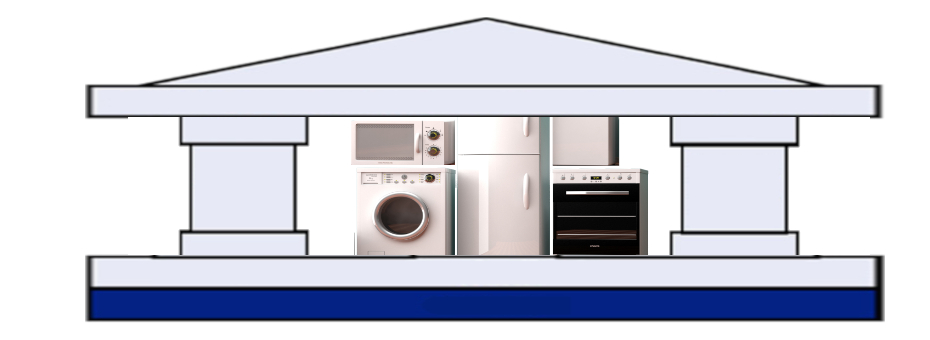This week a group of us spent the day at Appliance Park in Louisville Kentucky with the team from GE Appliances, which for the last few years has been a Haier company, in other words, owned by a Chinese company. We heard presentations on the lean journey at Appliance Park from Rich Calvaruso and about hoshin from Marcia Brey, and then went out to the plant floor where we toured one of the lines where washing machines are built. We got a great overview of the production process and system, and then returned after lunch for deeper dives with team leaders, maintenance and materials experts, and others in plant management.
It’s obvious that they have made great progress on the lean journey in the past few years: the improvements in productivity and output and cost and quality are impressive. There is a lot of visual management; the folks we met seemed knowledgeable and sincere. They’ve been able to overcome a lot of skepticism from their unionized workforce and generate a lot of positive forward momentum. Customer demand is growing and they are planning for higher output at lower cost in the years ahead. The future looks pretty bright. They are gunning for their competition and gaining on them.
In many ways, the story at GE Appliances is a story about what’s right with the American worker and frontline management, and what’s wrong with ownership and senior management. Up until about 10 years ago, GE appliances weren’t made by GE; production had been offshored by GE corporate financial engineers to Asia, to some obscure Korean contract manufacturers that no one had ever heard of. “We’ve got nothing to fear from these guys,”, the corporate guys told local management. These Koreans — LG and Samsung — would never figure out how to make high-quality refrigerators and washing machines.
In many ways, the story at GE Appliances is a story about what’s right with the American worker and frontline management, and what’s wrong with ownership and senior management.Apparently, these management geniuses had never read the classic Clayton Christensen Innovator’s Dilemma, because the Korean contract manafacturers seem to have figured out that if they could build appliances for GE, they could also build and sell appliances of their own design and under their own brands. Who knew? So management made the decision to “reshore” appliance manufacturing back to the U.S. and back to Kentucky.
The only problem is that when you decide to stop making things, you lose the ability to make things: not just the displaced assembly workers who have had to seek employment elsewhere, but the design, production control, maintenance and quality engineers, the materials and logistics experts, all the technical know-how to manufacture effectively at scale, at world-class quality, and competitive cost.
So our GE colleagues had to start almost from scratch, which must have been excruciating–but with 20/20 hindsight might have been a blessing in disguise. Rich and Marcia and a few others had learned enough about lean and process improvement to know that there was a better way, and to have some appreciation for what they didn’t know. They got serious about learning – their own, first, but also about developing their people, and about exposing senior leaders to a better way. They made enough mistakes to learn that humility is a blessing and that only through mistakes and experimentation do we actually learn. They were lucky enough to find some senior leaders at the corporate level who understood this new direction and were willing to learn themselves – in many cases, through the “immersion” program that Rich and team devised that actually put senior leaders on the line doing the work for weeks at a time. What better way to learn the need to improve?
Along the way, the financial wizards at GE corporate decided that this reshoring effort, profitable and headed in the right direction, would be a great asset to sell. For years, the fundamental mandate from GE corporate to Appliance Park management had been: generate cash and don’t screw up the brand. Now they looked at this venerable brand as just another asset to monetize, just another page in the portfolio of companies in the conglomerate that has been the modern General Electric for decades. They sold GE Appliances to the Chinese company Haier, in a perverse piece of poetry for a manufacturing operation that had been offshored, reshored, and now sold to a company from the region from which the operation had only recently been returned. For its part, Haier management seems committed to the lean journey and to serving the U.S. market, which bodes well for the local workforce. But if some brilliant professor of management turned the GE Appliances story into a business school case study, it would reflect well on the passion, commitment, and humility of managers like Rich and Marcia, and not much good at all on those at the top of the GE corporate food chain.



